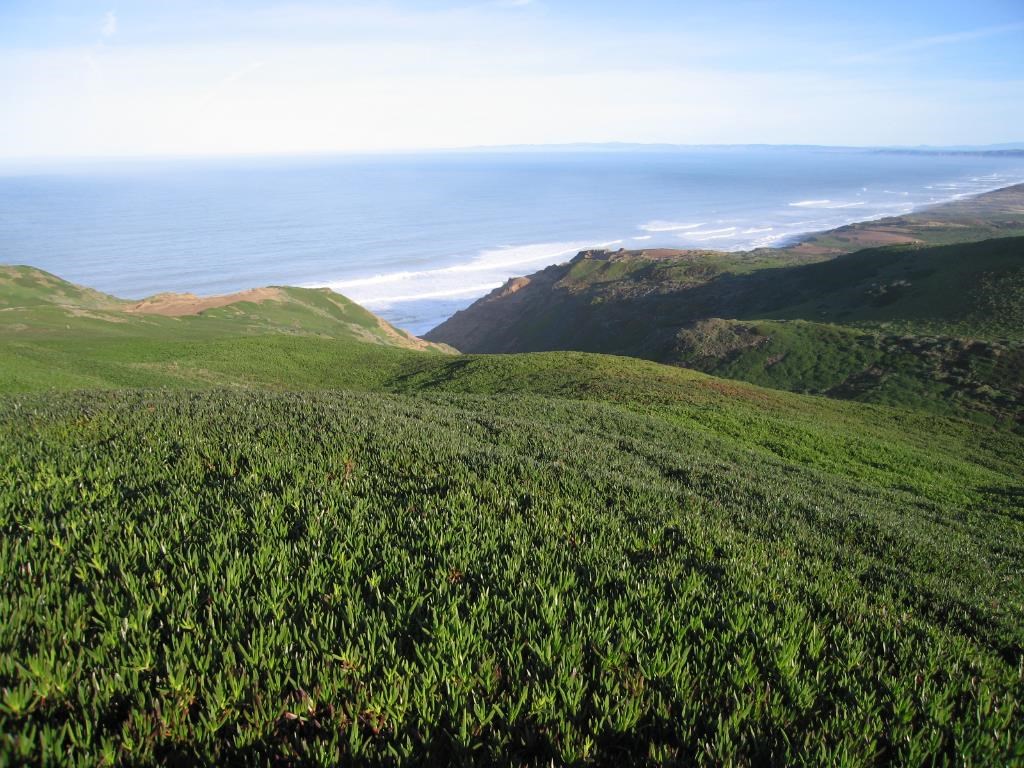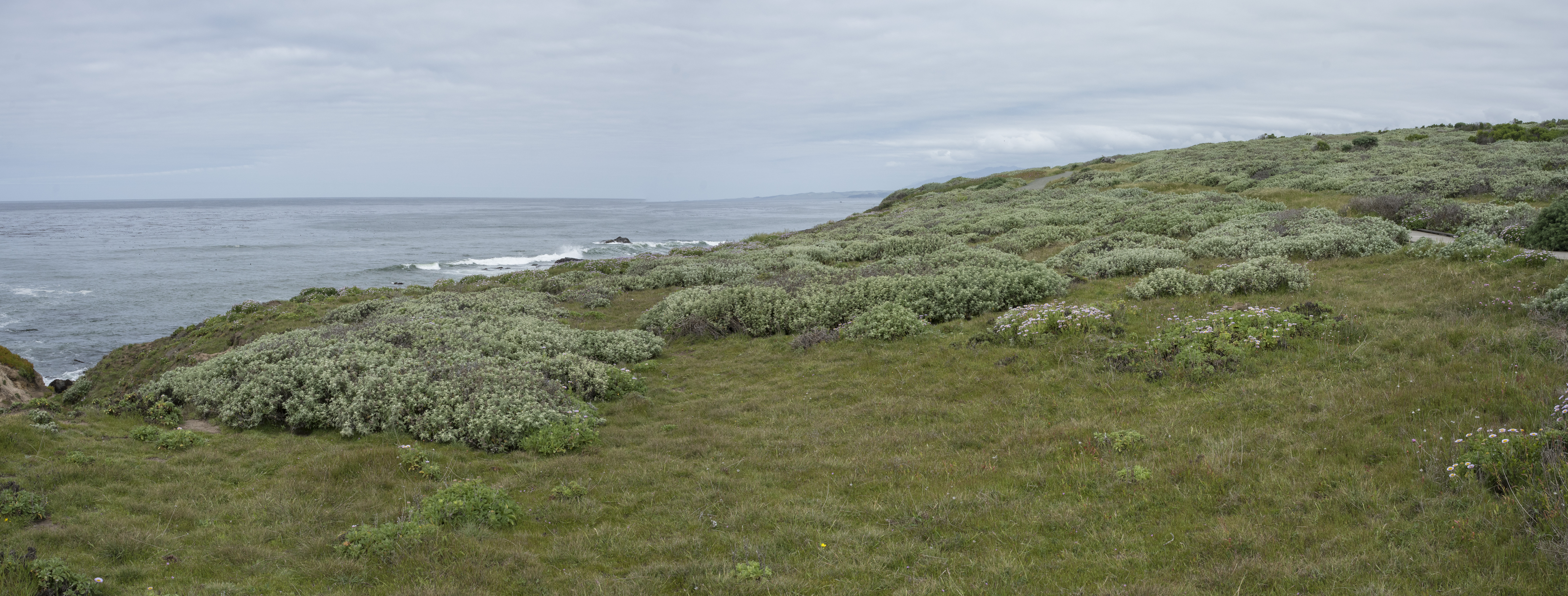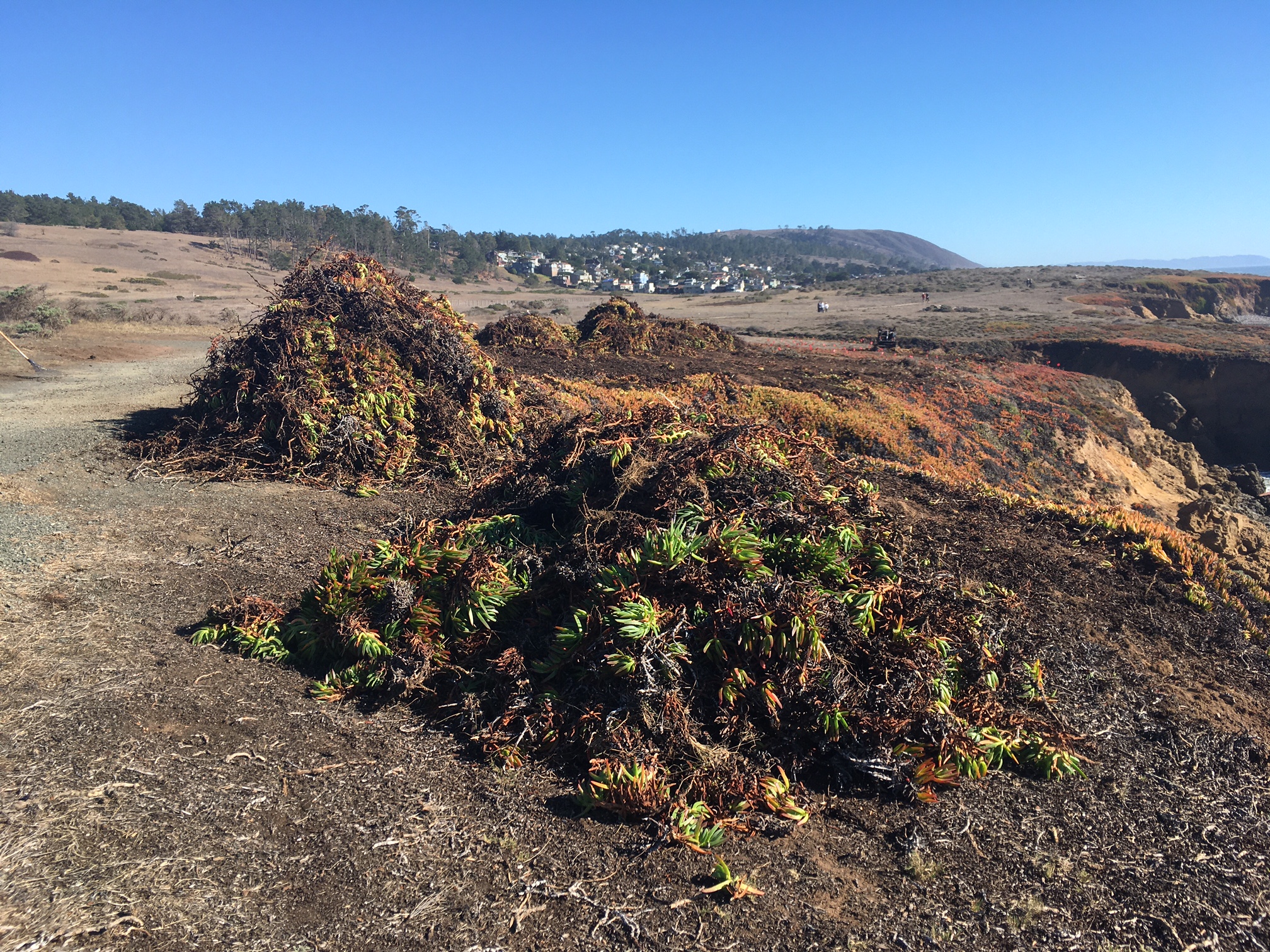2021.11.04 | Restoring the Coastal Bluff on Fiscalini Ranch Preserve
Photo 1. Piles of ice plant pulled from the Fiscalini Ranch Preserve coastal bluff. Photo: FFRP
A fundamental purpose of the Fiscalini Ranch Preserve is the protection and restoration of the natural habitat of this former dairy and cattle ranch. To accomplish that goal, Friends of the Fiscalini Ranch Preserve (FFRP) and the Cambria Community Services District (CCSD) have an ongoing program of removing invasive species from the preserve. Under this program, South African ice plant (Carpobrotus edulis, Carpobrotus chilensis, and their hybrids) is being removed from along the bluff tops north and south of the Arch Bench on the Bluff Trail.
We remove ice plant because it is crowding out the coastal bluff plants that have grown in Cambria for thousands of years. These native species provide vital support for diverse local animals. Once firmly established, ice plant creates changes in the soil chemistry and microbes that make reestablishment of native plants more difficult. If left untouched, a monoculture of ice plant eventually could cover untold acres of the Ranch as it has in many areas along California’s coast.

Photo 2. Ice plant comletely covering Point Reyes National Seashore. Photo: National Park Service.
Additionally, the juicy leaves of ice plant are heavy, and its shallow roots are not the best at holding soil. Native plants have finer, deeper roots that hold the bluff’s loose soil together. While ice plant is full of water all year, the mass of native plants is far less. By relieving the bluff tops of this heavy burden of ice plant and restoring soil-holding roots, the FFRP hopes to protect this dynamic landscape. Ice plant is not being removed from the bluff faces for safety reasons, as well as the difficulty in reestablishing native vegetation in that situation. Where FFRP and CCSD remove ice plant, natives are left that grow quickly to cover the area, and often the seed of native plants is spread to support native animals.
This recovery can be seen at many places along the trail. While many people find ice plant to be attractive—it has a place in a garden setting—it is truly at home only in South Africa. The Fiscalini Ranch Preserve is a place to appreciate the colors, textures, and seasonal rhythms of the Central Coast. Although the Preserve is undeniably beautiful, FFRP’s primary management goal is to enhance its ecological value and health, hand in hand with aesthetics. Restoration of native vegetation is vital to this effort.

- Photo 3. Recovery of native plants after removal of ice plant. Photo: FFRP
Article first published in https://cambriaca.org/



